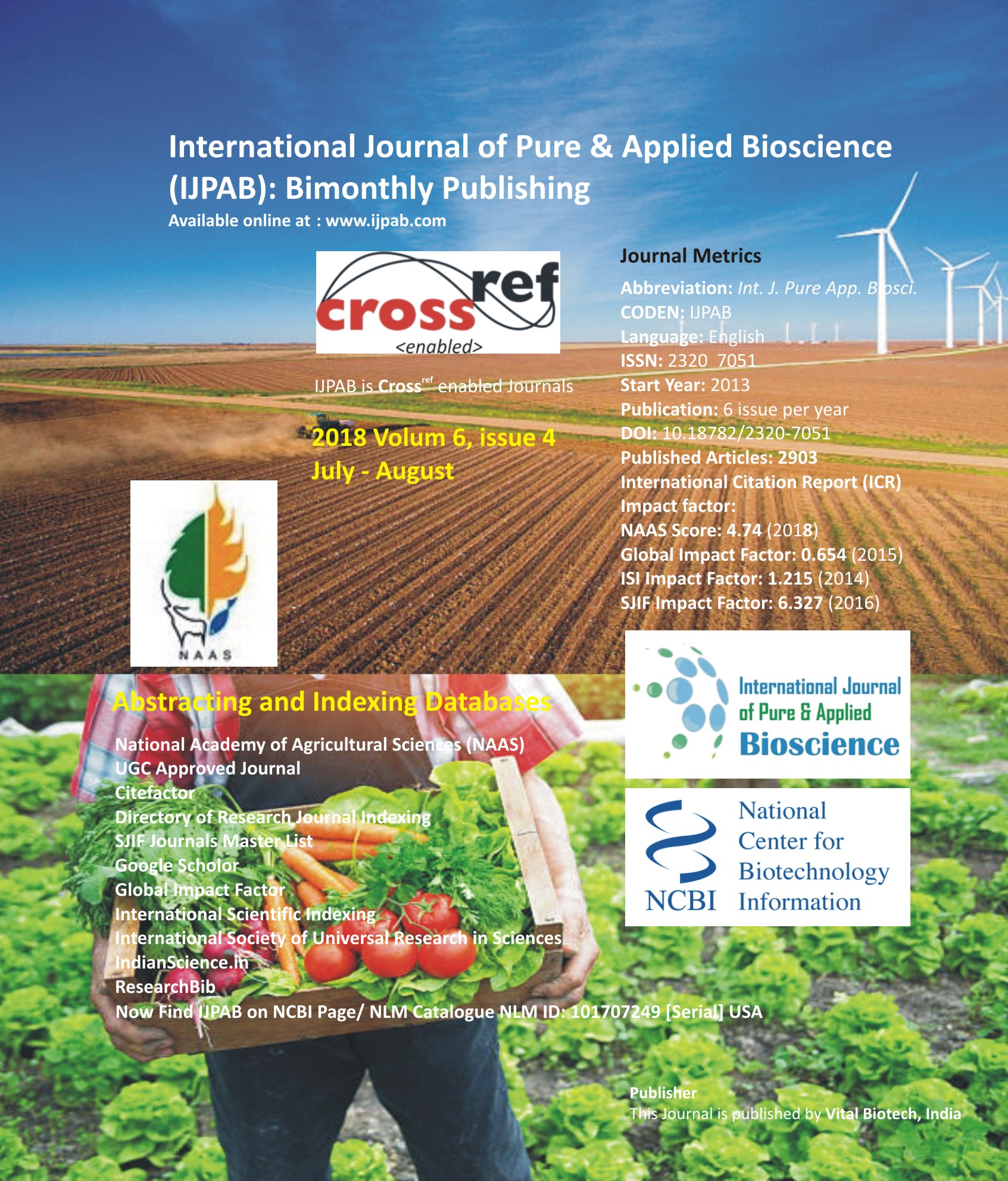
-
No. 772, Basant Vihar, Kota
Rajasthan-324009 India
-
Call Us On
+91 9784677044
-
Mail Us @
editor@ijpab.com
International Journal of Pure & Applied Bioscience (IJPAB)
Year : 2018, Volume : 6, Issue : 4
First page : (87) Last page : (101)
Article doi: : http://dx.doi.org/10.18782/2320-6768
Functional Properties of Gelatin Extracted From Poultry Skin and Bone Waste
A. D. Bichukale1, J. M. Koli2*, A. E. Sonavane4, V. V. Vishwasrao2, K. H. Pujari1 and P. E. Shingare3
1PGI, PHM Killa, Roha
2College of Fisheries, Shirgaon, Ratnagiri
3Taraporewala Marine Biological Research Station, Mumbai
4College of Fishery Science, Jabalpur (NDVSU, Jabalpur) Madhya Pradesh
*Corresponding Author E-mail: jmkoli@gmail.com
Received: 4.07.2018 | Revised: 8.08.2018 | Accepted: 14.08.2018
ABSTRACT
The utilization of waste skin and bone from poultry for production of value added by-products has attracted substantial attention. Poultry skin and bone is a waste part and can be converted into value added product like gelatin. This serves as a good practice of post harvest management of waste utilisation. In order to evaluate the waste from poultry as source of gelatin, the gelatin was extracted from skin and bone. Its rheological and functional properties were examined at five different temperatures (40°C, 45°C, 50°C, 55°C and 60°C).
Proximate composition of poultry skin and bone was observed to be moisture 70.01 and 58.60%, crude protein 12.94 and 10.30%, crude fat 12.00 and 5.70%, ash 4.50 and 6.65% respectively. The proximate composition of extracted gelatin was found to be comparatively
better at 45°C temperature which than what at 40°C, 50°C, 55°C and 60°C. The gelatin yield was extracted from poultry skin and bone at five different temperatures (40°C, 45°C, 50°C, 55°C and 60°C) for skin were 9.43, 10.53, 11.07, 11.80 and 12.23% for skin and 7.30, 7.49, 7.50, 7.52 and 8.03% for bone respectively bloom values of gelatin extracted poultry skin and
bone at five different temperatures (40°C, 45°C, 50°C, 55°C and 60°C) of skin were found to be 257.67, 274, 265.33, 263 and 260gm and of skin were 258.33, 282.67, 273.67, 264.33 and 262 gm respectively. Similarly the viscosity, melting point, emulsifying capacity and stability of extracted gelatin at 45°C temperature from poultry skin and bone were in general greater than those of gelatin extracted at 40°C, 50°C, 55°C and 60°C. Hydroxyproline content in extracted gelatin of poultry skin and bone was found to be in the range of 5.87-9.17 and 6.17-
8.23. The highest content of hydroxyproline was observed to be at 45°C temperature. It can be concluded from present study that the poultry skin and bone is a prospective source to produce gelatin of good yield and quality with desirable rheological and functional properties at 45°C temperature. These promising findings may contribute to the ongoing efforts for using poultry gelatin as an alternative source for fish and bovine gelatins.
Key words: Poultry waste (Skin and Bone), Rheological and Functional properties
Full Text : PDF; Journal doi : http://dx.doi.org/10.18782
Cite this article: Bichukale, A.D., Koli, J.M., Sonavane, A.E., Vishwasrao, V.V., Pujari, K.H. and Shingare, P.E., Functional Properties of Gelatin Extracted from Poultry Skin and Bone Waste, Int. J. Pure App. Biosci.6(4): 87-101 (2018). doi: http://dx.doi.org/10.18782/2320-7051.6768

